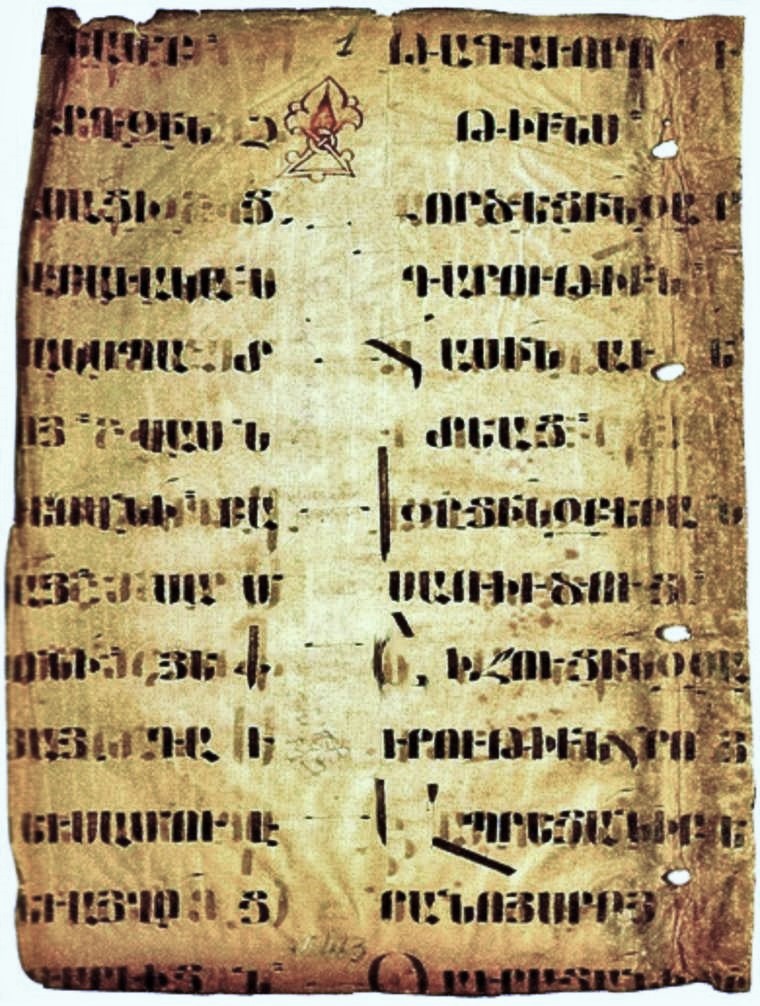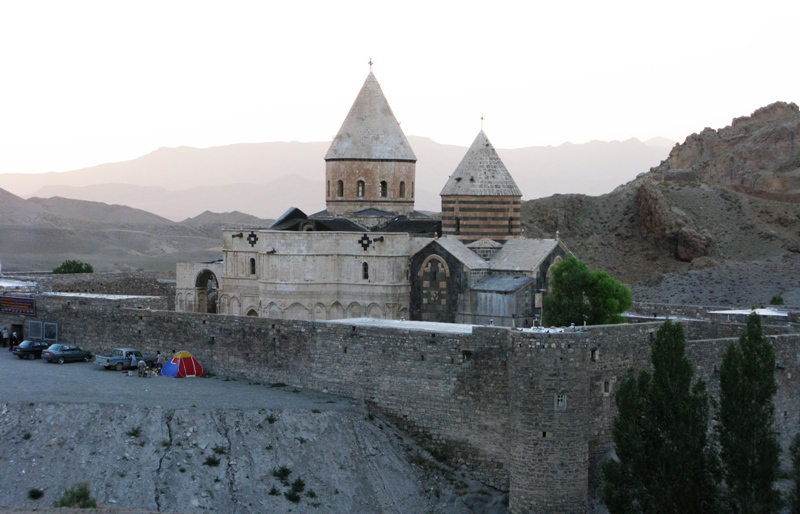|
Mets Astvatsatsin Monastery (Yukhari Aylis)
Mets Astvatsatsin Monastery was an Armenian monastery complex located on the slope of a hill, some 1.5 km east of Yukhari Aylis village (Ordubad district) of the Nakhchivan Autonomous Republic of Azerbaijan.Ayvazyan, Argam. ''The Historical Monuments of Nakhichevan.'' Transl. Krikor H. Maksoudian. Detroit: Wayne State University Press, 1990, pp. 22–23.Ayvazyan, Argam. ''Nakhijevani ISSH haykakan hushardzannery. Hamahavak tsutsak.'' Yerevan: Hayastan, 1986, p. 30.Ayvazyan, Argam. ''Agulis: Patmamshakutayin hushardzanner.'' Yerevan: Hayastan, 1984, p. 24, 45. The monastery complex was completely erased in 2000–2009. History The monastery was founded by Thaddeus the Apostle in the 1st century, according to local legend. It was rebuilt in the 12th–13th centuries, in the 17th century, and in the 18th century. It was a partially standing and dilapidated monument in the 1980s. Architectural characteristics The monastery complex was enclosed by a high outer wall an ... [...More Info...] [...Related Items...] OR: [Wikipedia] [Google] [Baidu] |
Azerbaijan
Azerbaijan (, ; az, Azərbaycan ), officially the Republic of Azerbaijan, , also sometimes officially called the Azerbaijan Republic is a transcontinental country located at the boundary of Eastern Europe and Western Asia. It is a part of the South Caucasus region and is bounded by the Caspian Sea to the east, Russia ( Republic of Dagestan) to the north, Georgia to the northwest, Armenia and Turkey to the west, and Iran to the south. Baku is the capital and largest city. The Azerbaijan Democratic Republic proclaimed its independence from the Transcaucasian Democratic Federative Republic in 1918 and became the first secular democratic Muslim-majority state. In 1920, the country was incorporated into the Soviet Union as the Azerbaijan SSR. The modern Republic of Azerbaijan proclaimed its independence on 30 August 1991, shortly before the dissolution of the Soviet Union in the same year. In September 1991, the ethnic Armenian majority of the Nagorno-Karabakh region for ... [...More Info...] [...Related Items...] OR: [Wikipedia] [Google] [Baidu] |
Armenian Apostolic Church
, native_name_lang = hy , icon = Armenian Apostolic Church logo.svg , icon_width = 100px , icon_alt = , image = Էջմիածնի_Մայր_Տաճար.jpg , imagewidth = 250px , alt = , caption = Etchmiadzin Cathedral, the mother church of the Armenian Apostolic Church , abbreviation = , type = , main_classification = Eastern Christian , orientation = Oriental Orthodox , scripture = Septuagint, New Testament, Armenian versions , theology = Miaphysitism , polity = Episcopal , governance = Mother See of Holy Etchmiadzin , structure = , leader_title = Head , leader_name = Catholicos of All Armenians Karekin II , leader_title1 = , leader_name1 = , leader_title2 = , leader_name2 = , leader_title3 = , leader_name3 = , associati ... [...More Info...] [...Related Items...] OR: [Wikipedia] [Google] [Baidu] |
Yuxarı Əylis
Yuxarı Əylis ( hy, Վերին Ագուլիս, lit=Upper Agulis, translit=Verin Agulis) is a village and municipality in the Ordubad District of Nakhchivan, Azerbaijan. It is located in the left and right sides of the Ordubad-Aylis highway, 12 km in the north-east from the district center. Its population is busy with gardening, farming, animal husbandry. There are secondary school, club, library, communication branch and a medical center in the village. It has a population of 1,916. The village was an important settlement of the Vaspurakan province of the Kingdom of Armenia or the Vaspurakan Kingdom, and a number of Armenian merchants who plied their trade along the Silk Road were of Agulis origin. History The settlement was first mentioned in historical sources in the 11th century under the Armenian name Argulik (). Its Armenian population specialized in the production of handicraft and sericulture. Numerous sixteenth-century sources spoke of it as a thriving town ... [...More Info...] [...Related Items...] OR: [Wikipedia] [Google] [Baidu] |
Ordubad District
Ordubad District ( az, Ordubad rayonu) is one of the 7 districts of the Nakhchivan Autonomous Republic of Azerbaijan. The district borders the district of Julfa, as well as the Syunik Province of Armenia, and the East Azerbaijan Province of Iran. Its capital and largest city is Ordubad. As at 2020, the district had a population of 50,200. Etymology Ordubad is a name of Turco-Persian origin and means, "''city of army''" (from Turkic ''ordu'' (army) and Persian ''bad'' (city)), which implies that the city was founded during the period of the Mongol, or the ensuing Il-Khanid rule. History Ordubad region was a part of the khanates of Erivan and Nakhchivan, which were dependencies of Qajar Iran, with Ordubad forming the main town of the district of Aza-Jeran in the eastern part of the khanate of Nakhchivan. After the Russo-Persian War and the Turkmanchay Treaty of 1828, the region was ceded by Iran to Imperial Russia, becoming part of the newly formed Armenian Oblast. It subseq ... [...More Info...] [...Related Items...] OR: [Wikipedia] [Google] [Baidu] |
Nakhchivan Autonomous Republic
The Nakhchivan Autonomous Republic ( az, Naxçıvan Muxtar Respublikası, ), is a landlocked exclave of the Republic of Azerbaijan. The region covers Official portal of Nakhchivan Autonomous RepublicNakhchivan Autonomous Republic with a population of 459,600 bordered by Armenia to the east and north, Iran to the southwest, and Turkey to the west. The republic, especially the capital city of Nakhchivan, has a long history dating back to about 1500 BCE. ''Nakhijevan'' was one the cantons of the historical Armenian province of Vaspurakan in the Kingdom of Armenia. Historically though, the Persians, Armenians, Mongols, and Turks all competed for the region. The area that is now Nakhchivan became part of Safavid Iran in the 16th century. In 1828, after the last Russo-Persian War and the Treaty of Turkmenchay, the Nakhchivan Khanate passed from Iranian into Imperial Russian possession. After the 1917 February Revolution, Nakhchivan and its surrounding region were under the au ... [...More Info...] [...Related Items...] OR: [Wikipedia] [Google] [Baidu] |
Thaddeus The Apostle
Jude ( grc-gre, Ἰούδας Ἰακώβου translit. Ioúdas Iakóbou) was one of the Twelve Apostles of Jesus according to the New Testament. He is generally identified as Thaddeus ( grc-gre, Θαδδαῖος; cop, ⲑⲁⲇⲇⲉⲟⲥ; Syriac/Aramaic: ܝܗܘܕܐ ܫܠܝܚܐ), and is also variously called Judas Thaddaeus, Jude Thaddaeus, Jude of James, or Lebbaeus and is considered as the founding father and the first Catholicos-Patriarch of the Armenian Apostolic Church. He is sometimes identified with Jude, the brother of Jesus, but is clearly distinguished from Judas Iscariot, the apostle who betrayed Jesus prior to his crucifixion. Catholic writer Michal Hunt suggests that Judas Thaddaeus became known as Jude after early translators of the New Testament from Greek into English sought to distinguish him from Judas Iscariot and subsequently abbreviated his forename. Most versions of the New Testament in languages other than English and French refer to Judas and Jude by ... [...More Info...] [...Related Items...] OR: [Wikipedia] [Google] [Baidu] |
Armenian Language
Armenian ( classical: , reformed: , , ) is an Indo-European language and an independent branch of that family of languages. It is the official language of Armenia. Historically spoken in the Armenian Highlands, today Armenian is widely spoken throughout the Armenian diaspora. Armenian is written in its own writing system, the Armenian alphabet, introduced in 405 AD by the priest Mesrop Mashtots. The total number of Armenian speakers worldwide is estimated between 5 and 7 million. History Classification and origins Armenian is an independent branch of the Indo-European languages. It is of interest to linguists for its distinctive phonological changes within that family. Armenian exhibits more satemization than centumization, although it is not classified as belonging to either of these subgroups. Some linguists tentatively conclude that Armenian, Greek (and Phrygian) and Indo-Iranian were dialectally close to each other;''Handbook of Formal Languages'' (1997p. ... [...More Info...] [...Related Items...] OR: [Wikipedia] [Google] [Baidu] |
Paganism
Paganism (from classical Latin ''pāgānus'' "rural", "rustic", later "civilian") is a term first used in the fourth century by early Christians for people in the Roman Empire who practiced polytheism, or ethnic religions other than Judaism. In the time of the Roman empire, individuals fell into the pagan class either because they were increasingly rural and provincial relative to the Christian population, or because they were not '' milites Christi'' (soldiers of Christ).J. J. O'Donnell (1977)''Paganus'': Evolution and Use ''Classical Folia'', 31: 163–69. Alternative terms used in Christian texts were '' hellene'', '' gentile'', and ''heathen''. Ritual sacrifice was an integral part of ancient Graeco-Roman religion and was regarded as an indication of whether a person was pagan or Christian. Paganism has broadly connoted the " religion of the peasantry". During and after the Middle Ages, the term ''paganism'' was applied to any non-Christian religion, and the term presum ... [...More Info...] [...Related Items...] OR: [Wikipedia] [Google] [Baidu] |
Apostle Thaddeus
Jude ( grc-gre, Ἰούδας Ἰακώβου translit. Ioúdas Iakóbou) was one of the Twelve Apostles of Jesus according to the New Testament. He is generally identified as Thaddeus ( grc-gre, Θαδδαῖος; cop, ⲑⲁⲇⲇⲉⲟⲥ; Syriac language, Syriac/Aramaic: ܝܗܘܕܐ ܫܠܝܚܐ), and is also variously called Judas Thaddaeus, Jude Thaddaeus, Jude of James, or Lebbaeus and is considered as the founding father and the first Catholicos-Patriarch of the Armenian Apostolic Church. He is sometimes identified with Jude, brother of Jesus, Jude, the brother of Jesus, but is clearly distinguished from Judas Iscariot, the Apostles in the New Testament, apostle who betrayed Jesus prior to his crucifixion. Catholic writer Michal Hunt suggests that Judas Thaddaeus became known as Jude after early translators of the New Testament from Koine Greek, Greek into English sought to distinguish him from Judas Iscariot and subsequently abbreviated his forename. Most versions of the ... [...More Info...] [...Related Items...] OR: [Wikipedia] [Google] [Baidu] |
QuickBird
QuickBird was a high-resolution commercial Earth observation satellite, owned by DigitalGlobe, launched in 2001 and reentered after orbit decay in 2015. QuickBird used Ball Aerospace's Global Imaging System 2000 (BGIS 2000). The satellite collected panchromatic (black and white) imagery at 61 centimeter resolution and multispectral imagery at 2.44- (at 450 km) to 1.63-meter (at 300 km) resolution, as orbit altitude is lowered during the end of mission life. At this resolution, detail such as buildings and other infrastructure are easily visible. However, this resolution is insufficient for working with smaller objects such as a license plate on a car. The imagery can be imported into remote sensing image processing software, as well as into GIS packages for analysis. Contractors included Ball Aerospace & Technologies, Kodak and Fokker Space. Original plans called for a constellation of three QuickBird satellites scheduled to be in orbit by 2008. In the end, two Q ... [...More Info...] [...Related Items...] OR: [Wikipedia] [Google] [Baidu] |



_b_016.jpg)
